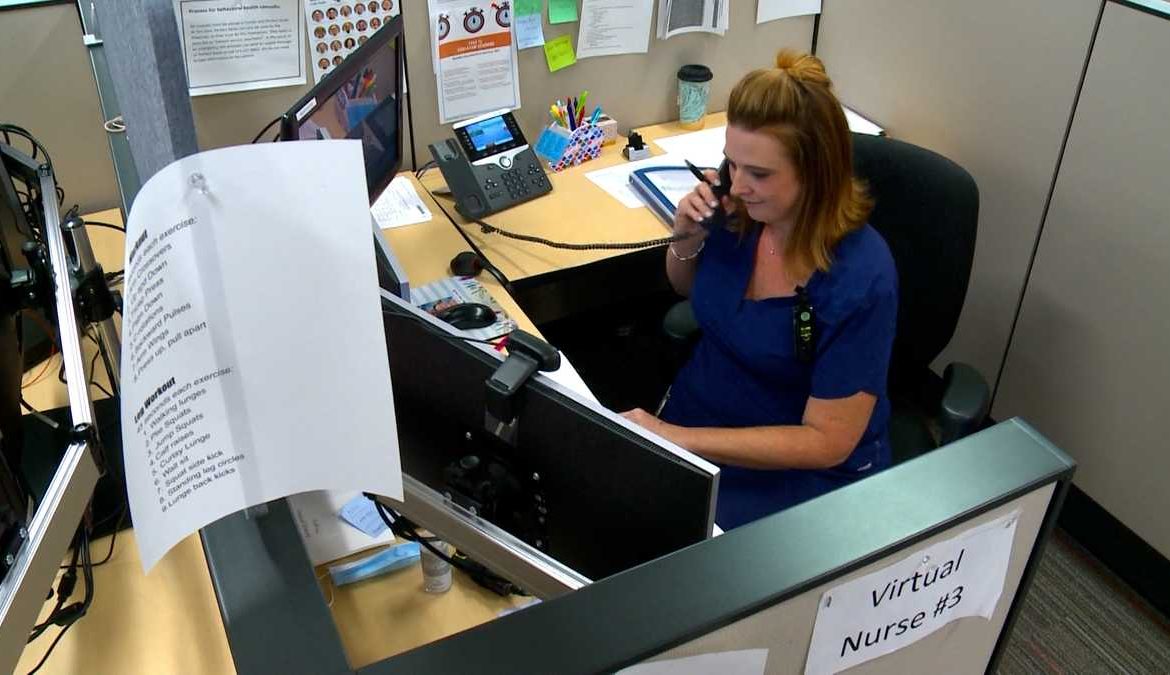In today’s digital age, technology is not just changing the way we live; it’s revolutionizing the way we receive healthcare. Telehealth and virtual nursing care have emerged as powerful tools, offering patients access to medical expertise, advice, and support without the need for physical presence in a healthcare facility. In this blog, we will explore the exciting world of telehealth and virtual nursing care and how these innovations are reshaping the healthcare landscape.

The Rise of Telehealth: Beyond Brick-and-Mortar Care
Telehealth is the use of telecommunications technology to provide healthcare services remotely. It encompasses a wide range of applications, from video consultations with doctors to remote monitoring of patients’ vital signs. However, what’s particularly intriguing is the role of nurses in telehealth and virtual care delivery.
Virtual Nursing Care: Beyond the Hospital Walls
Virtual nursing care is an extension of traditional nursing that utilizes technology to provide care and support to patients from a distance. Virtual nurses work with patients through telehealth platforms, phone calls, emails, and even text messages. Their roles are diverse, including health assessment, medication management, patient education, and emotional support.
The Benefits of Telehealth and Virtual Nursing Care: A Win-Win for All
- Accessibility: Telehealth breaks down geographical barriers, ensuring patients in remote or underserved areas can access medical care. Virtual nursing care brings healthcare to patients’ homes, making it easier for them to receive the attention they need.
- Convenience: Patients can schedule appointments, consult with nurses, and receive follow-up care from the comfort of their homes. This eliminates the need for long commutes and waiting times at healthcare facilities.
- Improved Chronic Disease Management: For patients with chronic conditions, virtual nursing care allows for continuous monitoring and timely interventions, reducing hospital readmissions and improving overall health outcomes.
- Cost Savings: Telehealth can reduce healthcare costs for both patients and healthcare systems. Fewer in-person visits, reduced travel expenses, and early interventions can all contribute to cost savings.
- Enhanced Patient Engagement: Patients often feel more comfortable and engaged when they receive care in their own environments. This can lead to better adherence to treatment plans and improved overall well-being.
Nursing’s Role in Telehealth and Virtual Care: A Multifaceted Approach
- Teletriage: Nurses can provide initial assessments and triage patients, determining the urgency of their needs and directing them to appropriate levels of care.
- Medication Management: Virtual nurses can help patients manage their medications, ensuring they take them as prescribed and addressing any concerns or side effects.
- Patient Education: Nurses play a pivotal role in educating patients about their conditions, treatment options, and self-care practices, which can all be done virtually.
- Emotional Support: Virtual nursing care extends beyond physical health; it includes emotional support for patients dealing with anxiety, depression, or other mental health challenges.
- Remote Monitoring: Nurses can monitor patients’ vital signs, chronic conditions, and recovery progress remotely, intervening when necessary.
Challenges and Considerations
While telehealth and virtual nursing care offer remarkable benefits, they also come with challenges such as ensuring patient privacy, addressing technological disparities, and maintaining the human touch in care delivery. It’s important to find a balance between the convenience of technology and the personalized care that patients deserve.
Conclusion: Bridging the Gap to Better Healthcare
Telehealth and virtual nursing care represent a monumental shift in how healthcare is delivered and received. These innovations have the potential to enhance access, convenience, and outcomes for patients, while also offering nurses new avenues for delivering care. By embracing technology and adapting to the changing healthcare landscape, nurses are helping bridge the gap to a future where quality healthcare is accessible to all, anytime, anywhere.














